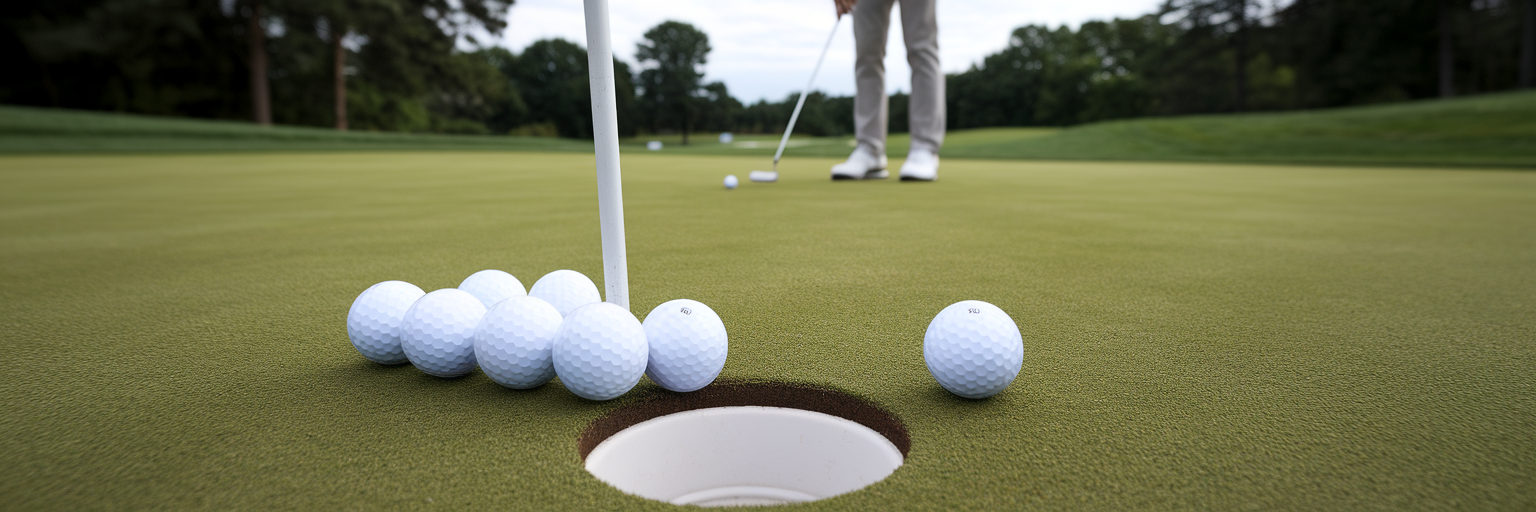10 Essential Tips Every Beginner Golfer Should Know
Starting Your Golf Journey with Confidence
Stepping onto a golf course for the first time brings a unique mix of excitement and nerves. The open green, the quiet focus, it can all feel a bit intimidating. But golf is not a test to be passed; it is an enjoyable journey that can last a lifetime. This guide offers ten foundational beginner golf tips to build a solid base and make the process fun. Remember, learning how to play golf is about patiently mastering a few key fundamentals, not achieving perfection on your first day.
Tip 1: Choose Your Clubs Wisely
Your clubs are your primary tools, and using the right ones can make a significant difference. As a beginner, you should look for clubs described as “forgiving.” This simply means they are designed to help you out when you don't hit the ball perfectly. These clubs often have a feature called a “cavity-back” and a larger “sweet spot,” which is the ideal area on the clubface for contact. As noted by publications like Golf Digest, beginners benefit most from clubs designed to improve accuracy on off-center hits. There is no need to buy an expensive, advanced set. A basic starter package or a quality used set is perfect. A great starting point for how to choose golf clubs includes a driver, a 6-iron, an 8-iron, a pitching wedge, a sand wedge, and a putter. Visiting a golf shop for professional advice will ensure your clubs are the right length for your height.
Tip 2: Master a Consistent Grip and Stance
Your grip is your only connection to the club, making it the foundation of every shot. While there are three common grips, the key is to find one that feels natural and allows you to control the clubface. Think of holding a tube of toothpaste; you want to be firm enough so it doesn’t slip, but not so tight that you squeeze everything out. This light but secure pressure prevents tension in your arms. Your stance should be athletic and balanced. Stand with your feet about shoulder-width apart, bend your knees slightly, and tilt forward from your hips while keeping your back relatively straight. This stable base allows you to rotate smoothly through the swing.
| Grip Type | Description | Best For |
|---|---|---|
| Overlapping (Vardon) | The pinky finger of the trail hand rests on top of the index finger of the lead hand. | Most popular grip; good for players with average to large hands. |
| Interlocking | The pinky finger of the trail hand and the index finger of the lead hand link together. | Players with smaller hands or those seeking a very secure feel. |
| Ten-Finger (Baseball) | All ten fingers are on the club, similar to holding a baseball bat. | Beginners, juniors, or players with hand-strength issues. |
Tip 3: Develop a Simple, Repeatable Swing
Many beginners believe power is the goal, but a smooth, controlled swing that makes solid contact is far more effective. Focus on rhythm and balance instead of trying to hit the ball with all your might. A great basic golf swing can be simplified into a few key thoughts to build muscle memory. At the driving range, practice this simple sequence:
- Start with a smooth takeaway, bringing the club back without rushing.
- Begin the downswing with a fluid turn of your lower body, letting your arms follow naturally.
- Finish in a balanced follow-through with your chest facing the target.
The goal is not to hit every ball perfectly but to build a consistent motion you can trust.
Tip 4: Prioritize Your Short Game with Putting
It might surprise you to learn that nearly half of your strokes in a round will happen on or near the putting green. This makes putting the fastest way for any beginner to lower their scores. Effective golf short game practice starts here. A simple and highly effective drill for distance control is to place golf balls at 5, 10, and 15 feet from the hole. Your goal is not necessarily to make every putt but to get each one within a three-foot circle around the cup. The ideal putting stroke is a pendulum-like motion powered by your shoulders, keeping your wrists and lower body as still as possible. This consistency will save you strokes and build confidence.
Tip 5: Don't Neglect Chipping
Just off the green, you will face a shot called a chip. This is a short, low-flying shot designed to get the ball onto the green and rolling toward the hole like a putt. A simple chipping technique can be very reliable. Stand with your feet close together, place a little more of your weight on your front foot, and use a stroke that feels very similar to your putting motion. By minimizing wrist action, you encourage clean contact and predictable results. To make practice more engaging, try setting up a small circle of tees on the practice green and see how many chips you can land inside it.
Tip 6: Understand Basic Golf Etiquette
Understanding golf course etiquette for beginners is not about memorizing a stuffy rulebook. It is about ensuring safety, showing respect for other players, and taking care of the course so everyone can enjoy it. Being a good playing partner is as important as hitting a good shot. Here are a few key guidelines to remember:
- Play at a reasonable pace and be ready to hit when it is your turn.
- Repair your divots (the patches of turf you displace) in the fairway and fix your ball marks on the green.
- Always be aware of where others are standing before you swing.
- Avoid walking in another player's putting line, which is the path their ball will take to the hole.
- Remain quiet and still while others are hitting their shots.
Tip 7: Learn Simple Course Management
Course management is simply about playing smart, not just hard. It means choosing the shot that gives you the highest chance of success, not always the most heroic one. For a beginner, a simple strategy is the most effective. When you are on the tee box, aim for the widest part of the fairway instead of trying to cut a corner. On your approach shots, aim for the center of the green rather than directly at the flag. This approach minimizes risk and keeps you out of trouble like sand traps and water hazards. Adopting a "bogey golf" mindset, where you aim for one over par on each hole, is a healthy goal that reduces pressure and often leads to better scores.
Tip 8: Set Realistic Goals for Improvement
Golf improvement happens slowly, and it is easy to get frustrated when you don't see immediate results. Instead of focusing on your final score, set small, achievable process-oriented goals. For example, your goal for a practice session might be to make solid contact on half of your shots or to leave most of your practice putts within three feet of the hole. Consider keeping a simple journal or using an app to track these small victories. Seeing your progress in writing provides a tangible sense of accomplishment and helps you stay motivated through the inevitable ups and downs of learning the game.
Tip 9: Build Your Mental Resilience
You will quickly discover that golf is as much a mental challenge as it is a physical one. The best players have a "one-shot-at-a-time" mindset. They learn to leave a bad shot in the past and focus completely on the one in front of them. Developing a simple pre-shot routine, like taking two practice swings and a deep breath before you hit, can calm your nerves and focus your mind. Developing mental resilience is so critical that, as publications like Psychology Today have explored, athletes use techniques like visualization to maintain focus under pressure.
Tip 10: Embrace Patience and Consistency
Every single golfer, from a weekend player to a touring professional, has bad days on the course. Patience with yourself and the learning process is absolutely essential for long-term enjoyment. You will build skill and muscle memory more effectively with consistent, short practice sessions rather than one long, infrequent trip to the range. A 30-minute session twice a week is more valuable than a three-hour session once a month. Most importantly, find joy in the process itself. Appreciate the walk in nature, the time with friends, and the personal challenge of improving, rather than focusing only on your score.
Your Path to a Better Golf Game
Mastering the fundamentals of your equipment, grip, swing, and short game is the surest path to improvement. These ten tips provide a clear roadmap for your first steps. Remember that patience, smart practice, and a positive mindset are the ingredients that turn frustration into progress. Learning how to play golf is a rewarding adventure, and by focusing on these core principles, you are setting yourself up for a long and satisfying journey on the course. Now, go have some fun.












